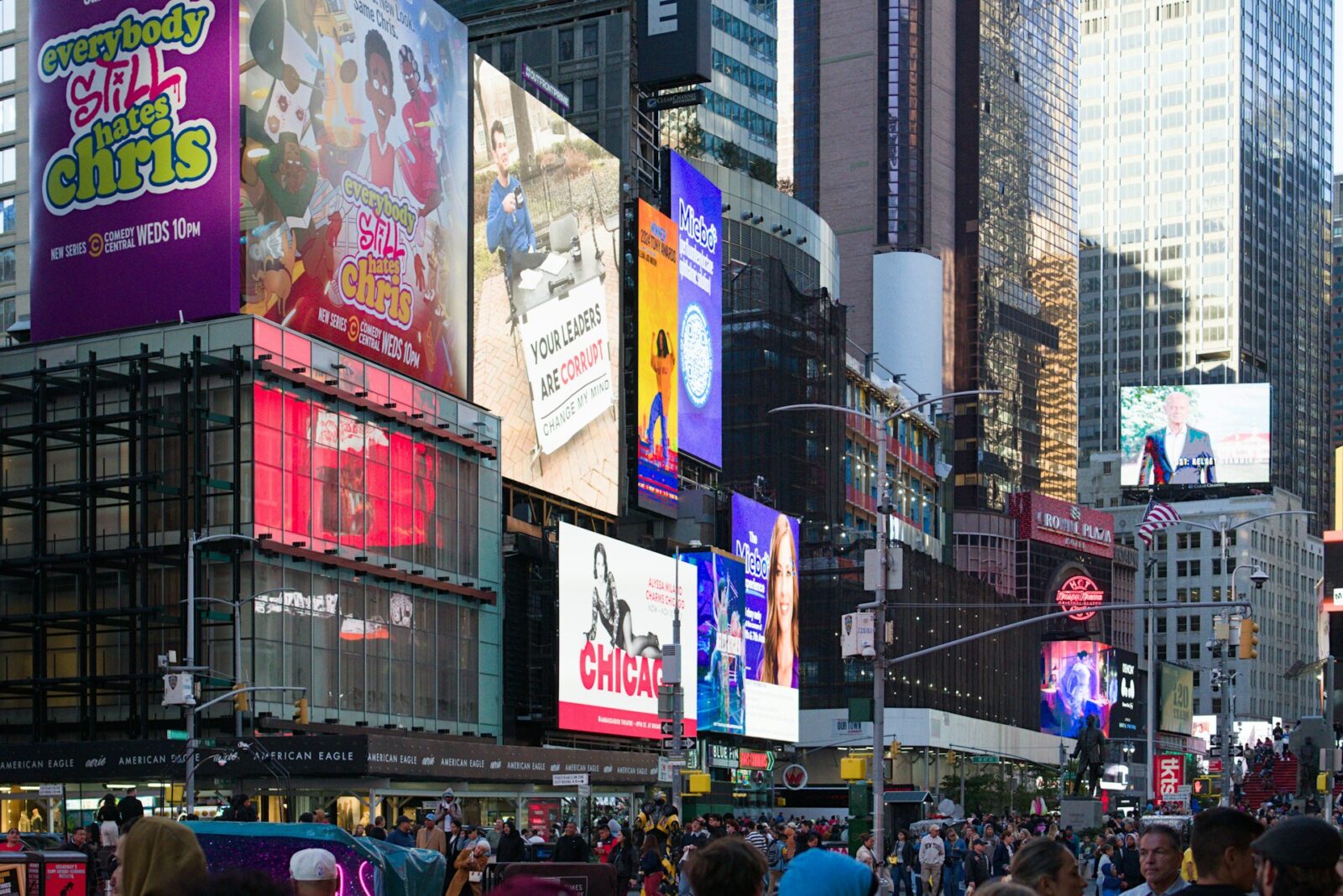A flickering LED sign can be more than just an annoyance—it’s a silent threat to your business’s visibility and professional image.
When customers see an inconsistent or malfunctioning display, it can undermine their confidence in your brand and drive them to competitors with more reliable signage. The good news is that flickering doesn’t always mean your LED sign is destined for the scrapyard.
Many issues can be resolved with targeted repairs, saving you thousands of dollars compared to a full replacement. However, knowing when to invest in repairs versus when to cut your losses requires understanding the underlying causes and weighing several key factors.
This guide will help you diagnose common flickering problems, evaluate repair costs against replacement benefits, and make an informed decision that protects your investment while maintaining your business’s professional appearance.
Understanding Why LED Signs Flicker
Power Supply Issues
Power supply problems are among the most common culprits behind flickering LED displays. When your sign’s power supply begins to fail, it can’t deliver consistent voltage to the LED modules, resulting in intermittent brightness or complete flickering.
These issues often develop gradually, starting with minor inconsistencies that worsen over time. Voltage fluctuations from your building’s electrical system can also cause flickering.
If other electrical equipment in your facility draws significant power, it may create voltage drops that affect your LED sign’s performance. Professional electricians can measure voltage stability and recommend solutions like dedicated circuits or voltage regulators.
LED Module Degradation
Individual LED modules within your sign may fail or degrade over time, creating dark spots or flickering sections.
This type of LED module repair is often straightforward and cost-effective, especially if only a few modules are affected. However, widespread module failure across your display may indicate broader system issues.
Temperature stress, moisture infiltration, and normal wear from years of operation can accelerate module degradation. Signs installed in harsh environments or those lacking proper weatherproofing are particularly susceptible to these problems.
Controller and Connection Problems
The controller board that manages your LED sign’s display functions can develop faults that manifest as flickering.
Loose connections, corroded terminals, or failed components within the controller can disrupt normal operation. These issues often require professional diagnosis to identify and resolve effectively.
Data cables connecting your controller to LED modules can also cause flickering if they become damaged or loose. Regular maintenance checks can help identify connection problems before they lead to more serious failures.
Diagnosing the Severity of Flickering Problems
Visual Inspection Techniques
Start your assessment by observing the flickering pattern during different times of day and weather conditions. Note whether the flickering affects the entire sign or just specific sections, and document any correlation with environmental factors like temperature or humidity.
Check for obvious physical damage such as cracked housings, exposed wiring, or water intrusion. These visible issues often indicate more serious problems that may require extensive repairs or replacement.
Performance Testing Methods
Test your sign’s performance by cycling through different display modes and brightness levels. Consistent flickering across all modes suggests power supply or controller issues, while mode-specific problems may indicate software or programming faults.
Monitor the sign’s behavior over several days to identify patterns. Intermittent flickering that occurs only during specific conditions may be easier and less expensive to repair than constant, widespread flickering.
Professional Assessment Benefits
While basic troubleshooting can reveal obvious problems, professional LED sign repair specialists have specialized tools and expertise to diagnose complex issues. They can perform electrical testing, thermal imaging, and component analysis that isn’t possible with visual inspection alone.
Professional assessment also provides accurate repair cost estimates and realistic timelines, helping you make informed decisions about repair versus replacement options.
Cost Analysis: Repair vs. Replace
Repair Cost Factors
Simple repairs like replacing individual LED modules or power supplies typically cost a fraction of a full sign replacement. However, labor costs for accessing and replacing components in large or complex installations can add significantly to overall expenses.
The availability of replacement parts affects both cost and timeline. Older sign models may require expensive custom components or lengthy special orders, while newer systems often have readily available parts at competitive prices.
Replacement Investment Considerations
New LED signs offer improved energy efficiency, brighter displays, and enhanced durability compared to older models. While the initial investment is substantial, these improvements can provide long-term savings through reduced maintenance costs and lower energy consumption.
Consider the total cost of ownership when comparing repair and replacement options. A repaired sign may function adequately for a few more years, but a new installation could provide decades of reliable service with minimal sign maintenance requirements.
Break-Even Analysis
Calculate the break-even point by comparing repair costs to replacement costs over your expected sign lifespan. If repairs exceed 50% of replacement cost, or if you expect additional repairs within the next few years, replacement may be more economical.
Factor in business disruption costs when making your decision. Extended repair timelines or repeated service calls can impact your business operations and customer perception more than a single replacement project.
When Repair Makes Sense
Age and Condition Factors
LED signs less than five years old with isolated problems are usually excellent candidates for repair. These systems typically have readily available parts and sufficient remaining lifespan to justify repair investments.
Signs with good overall condition but specific component failures can often be restored to full functionality with targeted repairs. Focus on addressing root causes rather than just symptoms to ensure lasting results.
Scope of Damage Assessment
Minor flickering affecting less than 25% of your display area is often cost-effective to repair. Isolated LED module failures, loose connections, or single-component faults typically fall into this category.
If the flickering is limited to specific sections or functions, repairs can often restore full functionality without extensive system modifications. This approach preserves your existing investment while addressing immediate problems.
Warranty Considerations
Signs still under warranty should almost always be repaired rather than replaced, as manufacturer coverage can significantly reduce or eliminate repair costs. Review your warranty terms to understand covered components and service procedures.
Extended warranty options may influence your repair decision, especially if coverage includes labor costs and guaranteed response times. These programs can provide peace of mind and budget predictability for ongoing maintenance needs.
When Replacement is the Better Choice
Extensive System Failures
Widespread flickering affecting more than half of your display area often indicates fundamental system problems that are expensive to repair. Multiple component failures, controller board issues, or power supply problems affecting the entire sign typically favor replacement.
Signs experiencing cascading failures, where fixing one problem reveals additional issues, often exceed repair cost thresholds quickly. In these cases, replacement provides a fresh start with modern components and full warranty coverage.
Technology Obsolescence
Older LED signs may use discontinued components or outdated technology that’s expensive to maintain. If replacement parts are scarce or require custom manufacturing, replacement with current technology often makes more financial sense.
Modern LED signs offer improved brightness, color accuracy, and energy efficiency compared to older models. These improvements can enhance your sign’s impact while reducing operational costs over time.
Business Growth Considerations
If your business has outgrown your current sign’s capabilities, replacement provides an opportunity to upgrade size, resolution, or features. This approach addresses both the flickering problem and your evolving business needs simultaneously.
Consider future expansion plans when making your decision. A new sign designed with growth in mind can accommodate changing requirements without additional major investments.
Maintenance Tips to Prevent Future Issues
Regular Inspection Schedules
Establish monthly visual inspections to identify potential problems before they cause flickering. Look for physical damage, loose connections, and signs of moisture infiltration that could lead to component failures.
Annual professional inspections can identify subtle issues that aren’t visible during casual observation. These preventive assessments often catch problems early when repairs are less expensive and less disruptive.
Environmental Protection Measures
Ensure your sign has adequate weatherproofing to prevent moisture-related problems. Check seals, gaskets, and housing integrity regularly, especially after severe weather events.
Maintain proper ventilation around your sign to prevent heat buildup that can accelerate component degradation. Clear debris from ventilation openings and ensure adequate airflow around the installation.
Component Replacement Planning
Keep spare LED modules and common components on hand for quick repairs when problems occur. This approach minimizes downtime and prevents small issues from becoming major failures.
Develop relationships with qualified LED sign repair technicians who can respond quickly to problems. Having established service providers can reduce response times and ensure quality repairs when issues arise.
Making the Right Decision for Your Business
Choosing between repair and replacement for your flickering LED sign ultimately depends on balancing immediate costs against long-term value. Consider your sign’s age, the extent of problems, repair costs, and your business’s future needs when making this important decision.
If your sign is relatively new with isolated issues, repair often provides the best return on investment. However, older signs with widespread problems or obsolete technology may benefit from replacement with modern, efficient systems.
Don’t let a flickering LED sign continue damaging your business image. Whether you choose repair or replacement, taking prompt action demonstrates your commitment to quality and professionalism.
Consult with LED sign repair specialists to get accurate assessments and cost estimates, then make the decision that best serves your business’s immediate needs and long-term success.














